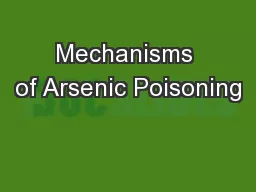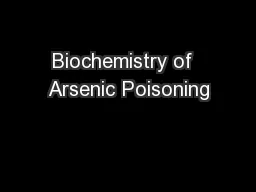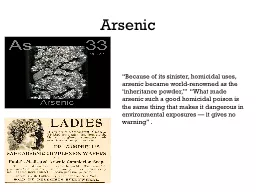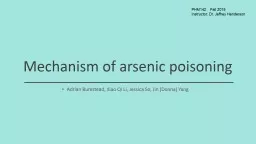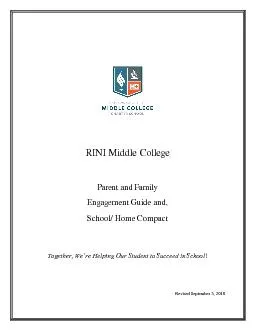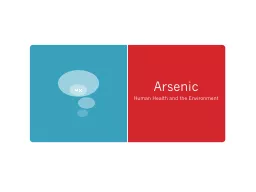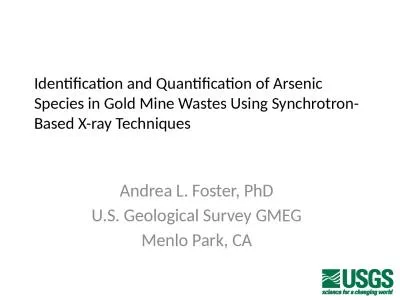PPT-Arsenic Poisoning Brandon, Victoria, Rini, and Kevin
Author : liane-varnes | Published Date : 2020-04-04
PHM142 Fall 2019 Coordinator Jeffrey Henderson Arsenic Sources and Human Exposure Natural Sources Arsenic is most abundant in the earths crust usually in the form
Presentation Embed Code
Download Presentation
Download Presentation The PPT/PDF document " Arsenic Poisoning Brandon, Victoria, Ri..." is the property of its rightful owner. Permission is granted to download and print the materials on this website for personal, non-commercial use only, and to display it on your personal computer provided you do not modify the materials and that you retain all copyright notices contained in the materials. By downloading content from our website, you accept the terms of this agreement.
Arsenic Poisoning Brandon, Victoria, Rini, and Kevin: Transcript
Download Rules Of Document
" Arsenic Poisoning Brandon, Victoria, Rini, and Kevin"The content belongs to its owner. You may download and print it for personal use, without modification, and keep all copyright notices. By downloading, you agree to these terms.
Related Documents




